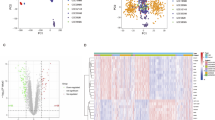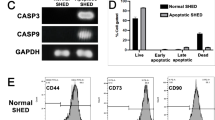Abstract
Aim:
To assess the roles of extracellular signal-regulated kinase (ERK), p38, and CD151-integrin complexes on proliferation, migration, and tube formation activities of CD151-induced human umbilical vein endothelial cells (HUVECs).
Methods:
CD151, anti-CD151 and CD151-AAA mutant were inserted into recombinant adeno-associated virus (rAAV) vectors and used to transfect HUVECs. After transfection, the expression of CD151 was measured. Proliferation was assessed using the 3-[4,5-dimethylthiazol- 2-yl]-2,5-diphenyl tetrazolium bromide (MTT) assay. Cell migration was evaluated in Boyden transwell chambers using FBS as the chemotactic stimulus. The tube formation assay was performed on matrigel. The potential involvement of various signaling pathways was explored using selective inhibitors.
Results:
CD151 gene delivery increased the expression of CD151 at both the mRNA and protein levels. Overexpression of CD151 promoted cell proliferation, migration and tube formation in vitro, and phosphorylation of ERK was also increased. Further, CD151-induced cell proliferation, migration, and tube formation were attenuated by the ERK inhibitor PD98059 (20 μmol/L) but not by a p38 inhibitor (SB203580, 20 μmol/L). Moreover, there was no significant difference in CD151 protein expression between the CD151 group and the CD151-AAA group, but the CD151-AAA mutant abrogated cellular proliferation, migration, and tube formation and decreased the phosphorylation of ERK.
Conclusion:
This study suggests that activation of the ERK signaling pathway may be involved in the angiogenic effects of CD151. Activation of ERK was dependent on the formation of CD151-integrin complexes. Therefore modulation of CD151 may be as a novel therapeutic strategy for regulating angiogenesis.
Similar content being viewed by others
Log in or create a free account to read this content
Gain free access to this article, as well as selected content from this journal and more on nature.com
or
References
Fitter S, Tetaz TJ, Berndt MC, Ashman LK . Molecular cloning of cDNA encoding a novel platelet-endothelial cell tetra-span antigen, PETA-3. Blood 1995; 86: 1348–55.
Hasegawa H, Utsunomiya Y, Kishimoto K, Yanagisawa K, Fujita S . SFA-1, a novel cellular gene induced by human T-cell leukemia virus type 1, is a member of the transmembrane 4 superfamily. J Virol 1996; 70: 3258–63.
Sincock PM, Mayrhofer G, Ashman LK . Localization of the transmembrane 4 superfamily (TM4SF) member PETA-3 (CD151) in normal human tissues: comparison with CD9, CD63, and alpha5beta1 integrin. J Histochem Cytochem 1997; 45: 515–25.
Sincock PM, Fitter S, Parton RG, Berndt MC, Gamble JR, Ashman LK . PETA-3/CD151, a member of the transmembrane 4 superfamily, is localised to the plasma membrane and endocytic system of endothelial cells, associates with multiple integrins and modulates cell function. J Cell Sci 1999; 112: 833–44.
Zhang XA, Kazarov AR, Yang X, Bontrager AL, Stipp CS, Hemler ME . Function of the tetraspanin CD151-alpha6beta1 integrin complex during cellular morphogenesis. Mol Biol Cell 2002; 13: 1–11.
Hong IK, Jin YJ, Byun HJ, Jeoung DI, Kim YM, Lee H . Homophilic interactions of tetraspanin CD151 up-regulate motility and matrix metalloproteinase-9 expression of human melanoma cells through adhesion-dependent c-Jun activation signaling pathways. J Biol Chem 2006; 281: 24279–92.
Takeda Y, Kazarov AR, Butterfield CE, Hopkins BD, Benjamin LE, Kaipainen A, et al. Deletion of tetraspanin Cd151 results in decreased pathologic angiogenesis in vivo and in vitro. Blood 2007; 109: 1524–32.
Zheng ZZ, Liu ZX . CD151 gene delivery increases eNOS activity and induces ECV304 migration, proliferation and tube formation. Acta Pharmacol Sin 2007; 28: 66–72.
Zuo HJ, Liu ZX, Liu XC, Yang J, Liu T, Wen S, et al. Assessment of myocardial blood perfusion improved by CD151 in a pig myocardial infarction model. Acta Pharmacol Sin 2009; 30: 70–7.
Lan RF, Liu ZX, Liu XC, Song YE, Wang DW . CD151 promotes neovascularization and improves blood perfusion in a rat hind-limb ischemia model. J Endovasc Ther 2005; 12: 469–78.
Yauch RL, Berditchevski F, Harler MB, Reichner J, Hemler ME . Highly stoichiometric, stable, and specific association of integrin alpha3beta1 with CD151 provides a major link to phosphatidylinositol 4-kinase, and may regulate cell migration. Mol Biol Cell 1998; 9: 2751–65.
Yauch RL, Kazarov AR, Desai B, Lee RT, Hemler ME . Direct extracellular contact between integrin α3β1 and TM4SF protein CD151. J Biol Chem 2000; 275: 9230–8.
Kazarov AR, Yang X, Stipp CS, Sehgal B, Hemler ME . An extracellular site on tetraspanin CD151 determines alpha 3 and alpha 6 integrin- dependent cellular morphology. J Cell Biol 2002; 158: 1299–309.
Zhang XA, Bontrager AL, Hemler ME . Transmembrane-4 superfamily proteins associate with activated protein kinase C (PKC) and link PKC to specific beta(1) integrins. J Biol Chem 2001; 276: 25005–13.
Hemler ME . Integrin-associated proteins. Curr Opin Cell Biol 1998; 10: 578–85.
Johnson GL, Lapadat R . Mitogen-activated protein kinase pathways mediated by ERK, JNK, and p38 protein kinases. Science 2002; 298: 1911–2.
Zhan Y, Kim S, Izumi Y, Izumiya Y, Nakao T, Miyazaki H, et al. Role of JNK, p38, and ERK in platelet-derived growth factor-induced vascular proliferation, migration, and gene expression. Arterioscler Thromb Vasc Biol 2003; 23: 795–801.
Zhou QM, Wang S, Zhang H, Lu YY, Wang XF, Motoo Y, et al. The combination of baicalin and baicalein enhances apoptosis via the ERK/p38 MAPK pathway in human breast cancer cells. Acta Pharmacol Sin 2009; 30: 1648–58.
Lan R, Liu Z, Song Y, Zhang X . Effects of rAAV-CD151 and rAAV- antiCD151 on the migration of human tongue squamous carcinoma cell line Tca8113. J Huazhong Univ Sci Tech Med Sci 2004; 24: 556–9.
Wang T, Li H, Zhao C, Chen C, Li J, Chao J, et al. Recombinant adeno-associated virus-mediated kallikrein gene therapy reduces hypertension and attenuates its cardiovascular injuries. Gene Ther 2004; 11: 1342–50.
Wang H, Lin L, Jiang J, Wang Y, Lu ZY, Bradbury JA, et al. Up-regulation of endothelial nitric-oxide synthase by endothelium-derived hyperpolarizing factor involves mitogen-activated protein kinase and protein kinase C signaling pathways. J Pharmacol Exp Ther 2003; 307: 753–64.
Carmeliet P . Mechanisms of angiogenesis and arteriogenesis. Nat Med 2000; 6: 389–95.
Buschmann I, Schaper W . Arteriogenesis versus angiogenesis: Two mechanisms of vessel growth. News Physiol Sci 1999; 14: 121–25.
Zheng ZZ, Liu ZX . Activation of the phosphatidylinositol 3-kinase/protein kinase Akt pathway mediates CD151-induced endothelial cell proliferation and cell migration. Int J Biochem Cell Biol 2007; 39: 340–8.
Wang Y, Wei X, Xiao X, Hui R, Card JW, Carey MA, et al. Arachidonic acid epoxygenase metabolites stimulate endothelial cell growth and angiogenesis via mitogen-activated protein kinase and phosphatidylinositol 3-kinase/Akt signaling pathways. J Pharmacol Exp Ther 2005; 314: 522–32.
Sawada S, Yoshimoto M, Odintsova E, Hotchin NA, Berditchevski F . The tetraspanin CD151 functions as a negative regulator in the adhesion-dependent activation of Ras. J Biol Chem 2003; 278: 26323–6.
Ashman LK . Cd151. J Biol Regul Homeost Agents 2002; 16: 223–6.
Johnson JL, Winterwood N, DeMali KA, Stipp CS . Tetraspanin CD151 regulates RhoA activation and the dynamic stability of carcinoma cell-cell contacts. J Cell Sci 2009; 122: 2263–73.
Shigeta M, Sanzen N, Ozawa M, Gu J, Hasegawa H, Sekiguchi K . CD151 regulates epithelial cell-cell adhesion through PKC- and Cdc42-dependent actin cytoskeletal reorganization. J Cell Biol 2003; 163: 165–76.
Zuo H, Liu Z, Liu X, Yang J, Liu T, Wen S, et al. CD151 gene delivery after myocardial infarction promotes functional neovascularization and activates FAK signaling. Mol Med 2009; 15: 307–15.
Acknowledgements
The project was supported by a grant from the National Natural Science Foundation of China (No 30670856).
We are grateful to Dr Xin ZHANG for providing the PzeoSV-CD151 plasmid (Department of Molecular Science, University of Tennessee Health Science Center).
Author information
Authors and Affiliations
Corresponding author
Rights and permissions
About this article
Cite this article
Zuo, Hj., Lin, Jy., Liu, Zy. et al. Activation of the ERK signaling pathway is involved in CD151-induced angiogenic effects on the formation of CD151-integrin complexes. Acta Pharmacol Sin 31, 805–812 (2010). https://doi.org/10.1038/aps.2010.65
Received:
Accepted:
Published:
Issue date:
DOI: https://doi.org/10.1038/aps.2010.65
Keywords
This article is cited by
-
Oral cancer cell to endothelial cell communication via exosomal miR-21/RMND5A pathway
BMC Oral Health (2024)
-
High-Throughput RNAi Screening Identifies a Role for the Osteopontin Pathway in Proliferation and Migration of Human Aortic Smooth Muscle Cells
Cardiovascular Drugs and Therapy (2016)
-
Involvement of activation of C-met signaling pathway in CD151-induced HUVECs angiogenesis
Journal of Huazhong University of Science and Technology [Medical Sciences] (2015)
-
CD151 promotes proliferation and migration of PC3 cells via the formation of CD151-integrin α3/α6 complex
Journal of Huazhong University of Science and Technology [Medical Sciences] (2012)



